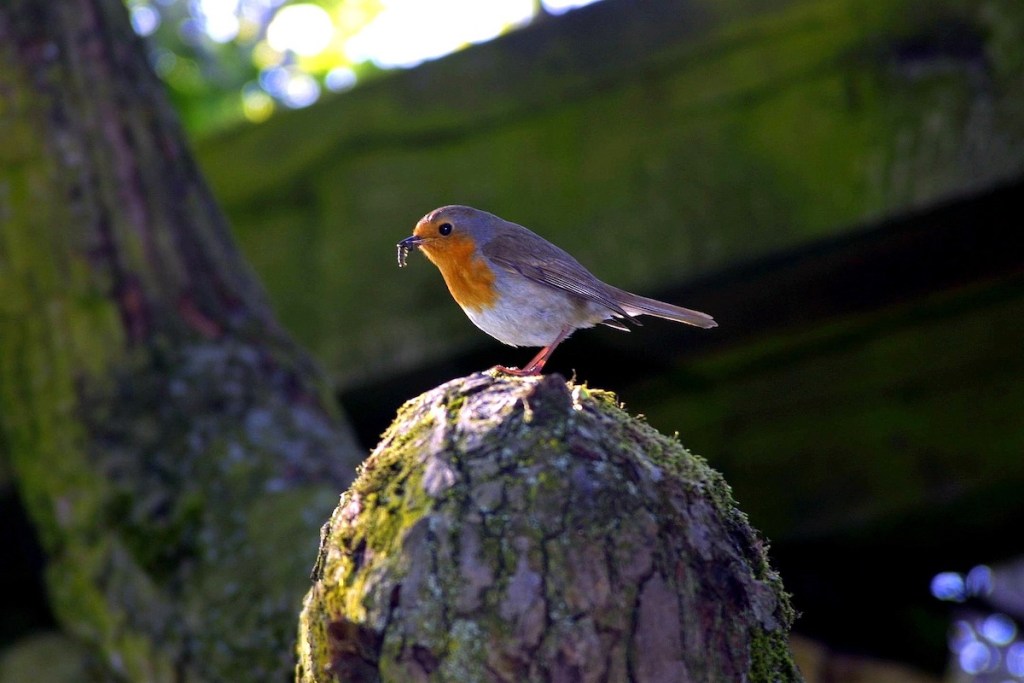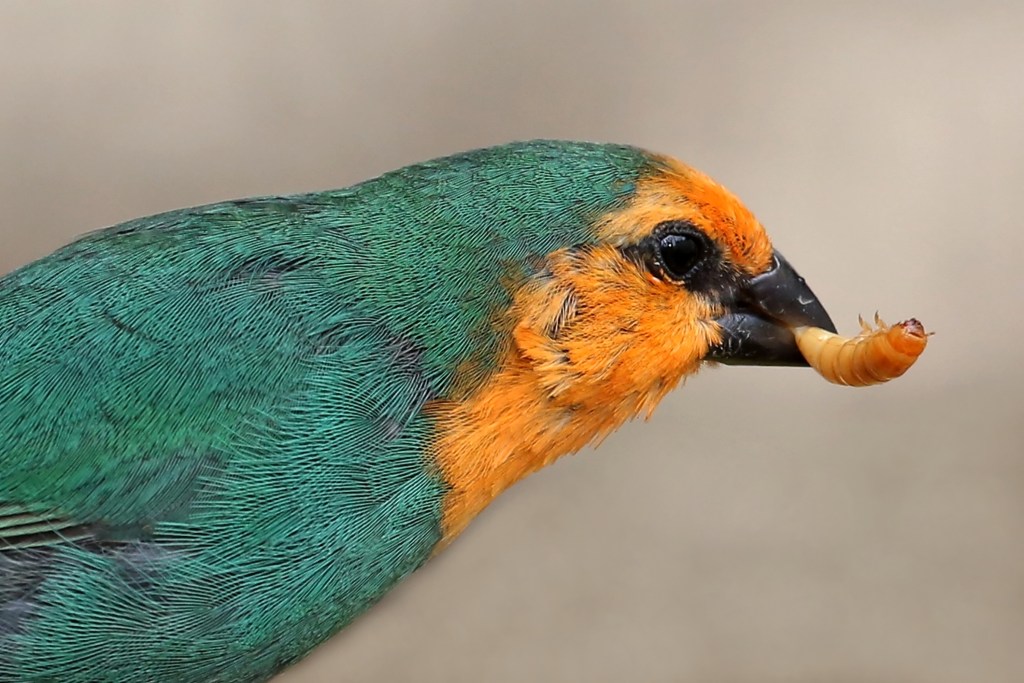Sharing a snack with your pet can be a delightful part of animal companionship, but sometimes they eat things that we should probably avoid. While many birds will take a nibble of banana from you, they also enjoy bugs as occasional snacks, which you probably won’t want to partake in. Lots of avians are omnivores and live on seeds, insects, and fruits. One of the best ways to give your pet a hit of protein and a delicious treat is by feeding him mealworms (yum). What birds eat mealworms and how often can you give them? You’ll need to know that first before diving into the baby beetle game.

What garden birds eat mealworms?
You already feed your bird neighbors seed, sugar water, and suet — if you want to attract everyone to your avian restaurant, that is. Many of them will enjoy mealworm treats, too, particularly in the late winter to gear them up for springtime. Insects in general, and especially these larvae, contain a lot of protein that wild birds need when preparing to lay eggs (and all the time, really). You can include mealworms in your feeders by adding them to your seed. When bugs are on the menu, you’ll spot extra woodpeckers, chickadees, and robins, who particularly go for these creepy crawlies.
What kinds of pet birds eat dried mealworms?
Inside the home, you’ll find birds who beg for worms as well. Both parrots and finches eat bugs as part of their diet in the wild, so you can offer them to your pet sometimes. The bird range includes budgies, lovebirds, cockatiels, canaries, and macaws, which means basically any standard pet bird will love to gobble up some grubs. You don’t have to stick with just mealworms, either, and can include other delectables such as crickets and flies.

Where do I get mealworms?
Never collect your own bugs for any pet since you might bring germs in with them and make birds sick. When you purchase consumable mealworms, they’ll come freeze-dried, which prevents that from happening. Many places will also test for bacteria and other unwanted issues. As long as you know they come from a good source, you can easily pick these up or have them consistently delivered. He never wants you to run out, after all.
How often can I feed mealworms to my pet?
The staple of pet birds’ diets should consist of seeds and fruits, though some love nuts as well, with bugs as more of an occasional treat. Giving your pet bird a special something will be the highlight of his day, and yours. Of course, you don’t want to overdo it, especially with the littlest parrots. Some of these cuties, such as cockatiels, struggle with their weight and giving them too many delicious niblets won’t help. In budgies, the concern is that this can trigger hormone changes and encourage breeding or egg-laying in the absence of a mate.
How do I give him his treats?
If you’re not squeamish, there’s no reason why you can’t feed the critters to your insect eater. As always, be mindful of his beak and remember that birds don’t see like us, so judge carefully unless you want your fingers nipped. We don’t recommend this as a daily treat because it’s such a calorie hit for a small bird, but you could dote on him with bugs every other day or a couple of times per week.
Most of us don’t want to think about this too closely, but our pets eat some gross things, including mealworms and other wriggly meals. Whether you’re adding to a parakeet’s treat regimen or trying to attract some more colorful beauties to your yard, investing in a bag of bugs is a great way to start. You should be able to track their consumption and watch their reactions to see if they go for it or give it a pass. Try other insects if you get a miss, but some birdies will want to stick to their fruits and grains rather than these hearty proteins. Don’t force them on your pet if he turns up his beak at them the first few times you try. He just might warm up to them eventually.
Editors' Recommendations
- What causes high pH in an aquarium? We’ll walk you through getting your tank levels in check
- 7 telltale signs of a dying hamster (and what you should do)
- How to clear cloudy aquarium water in a few easy steps and make your fish happy
- Can you make a profit breeding your bearded dragon?
- Are female betta fish worth it? Here’s why you should consider getting one of these pretty fish




